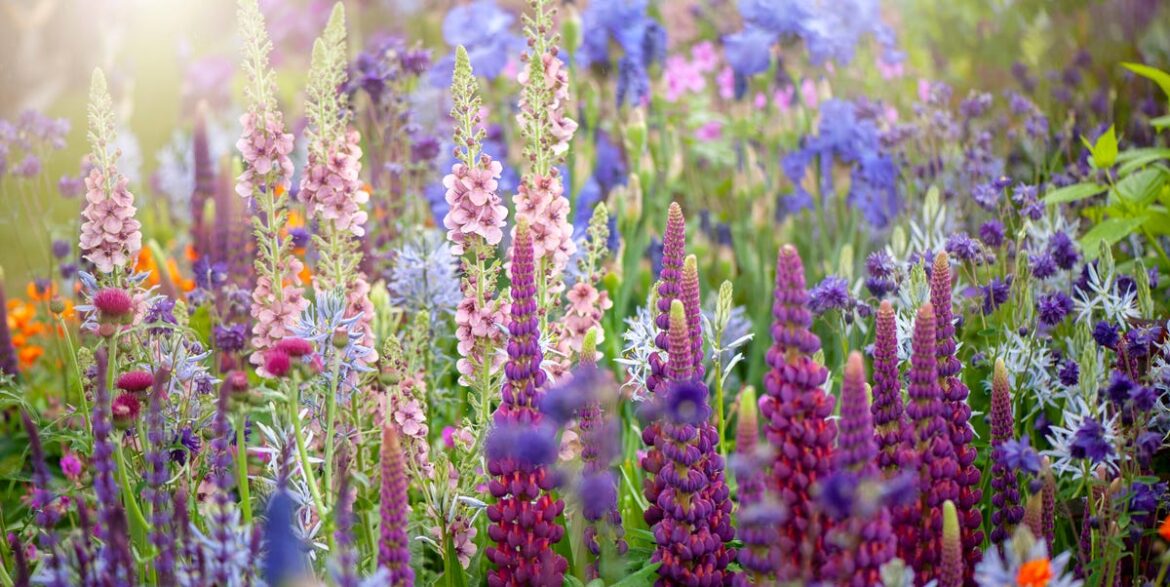Fall may signal the end of the growing season, but it’s also the beginning of next year’s garden. As temperatures drop and leaves fall, it’s time to put your garden to rest and give your perennials the care they need to survive winter and thrive in spring. Done right, fall gardening protects your investment and sets the stage for healthier, more resilient plants. Done wrong, it could undo a season’s worth of growth.
To help you avoid common missteps, we turned to Annie Morton, brand ambassador at Hoselink and a hands-on gardener who believes caring for the earth starts in our own backyard.
1. Pruning Too Early
It can be tempting to tidy up your garden as soon as plants start to fade, but cutting perennials back too soon can do more harm than good. When you prune before they’ve fully gone dormant, you interrupt the plant’s natural process of sending energy down to the roots for winter storage. Morton says you’ll know it’s safe to prune “once all the foliage has browned and dried, and the stems feel crisp instead of soft.” She suggests a simple test: if you tug gently and the top breaks off easily, the plant is truly dormant and ready for pruning.
JulieAlexK//Getty Images
2. Forgetting to Water
Many gardeners make the mistake of cutting back on watering too soon, leaving roots vulnerable to drying out before winter sets in. Morton advises easing up gradually once daytime temperatures settle into the 60s, but not stopping altogether. “Watering once a week during the autumn months is preferred—unless it’s been really dry,” she says. The goal is to keep the soil slightly moist until the ground begins to freeze. When those chilly nights become consistent and the top layer of soil stays cold, it’s safe to stop.
3. Dividing or Moving Plants Too Late
Fall is a great time to divide crowded perennials or move plants to better spots, but timing is everything. Replanting too close to the first frost means roots won’t have enough time to establish before the ground freezes. Morton warns that “if you’re counting down to that first frost, it’s probably too late.” She recommends giving new divisions at least six to eight weeks to settle in. Once nighttime temperatures stay consistently cold and the soil feels chilly to the touch, it’s best to wait until spring.
4. Over-Cleaning the Garden
A spotless garden might look satisfying in fall, but removing every leaf and stem can actually do more harm than good. “It’s all about finding that happy medium—tidy enough to look good to your eyes, but not so clean that it looks sterile,” says Morton. If you strip away every bit of organic matter, you also remove the natural insulation that protects roots and the habitat that shelters beneficial insects over winter. She recommends leaving some fallen leaves, dried stems, and seed heads in place. They act like nature’s mulch and even provide food for birds during the colder months.
wulingyun//Getty Images
5. Crowding or Losing Track of Plants
When perennials are packed too closely, they compete for space, sunlight, and nutrients, leading to weaker growth and fewer blooms. Morton suggests that fall is the perfect time to take a step back and assess your garden layout. “Use labels or markers to mark each plant’s spot while it’s still visible,” she says, “so you won’t forget what’s planted where over winter.” Taking the time now to label and plan saves plenty of digging, guessing, and stressed plants when spring rolls around.
6. Cutting Everything Back
While it may seem tidy to cut every perennial down to the ground, a little restraint goes a long way in supporting your garden’s ecosystem. Morton advises leaving sturdy seed heads and ornamental grasses standing tall. They add texture and beauty to the winter landscape while offering shelter for birds and insulation for roots. The goal, she says, is to “keep what helps the garden thrive through cold, and trim what could turn into a soggy mess.”
7. Skipping Mulch or Fertilizing Too Late
Neglecting to mulch or fertilizing too late in the season can leave your perennials vulnerable just when they need protection most. Morton says the best time to mulch is “once the soil has cooled, or when it feels noticeably chilly to the touch, usually around 50–55°F, a few inches deep.” This timing helps insulate roots without trapping excess warmth. Morton explains that fall mulch acts like a cozy blanket, shielding bare soil from freezing temperatures and moisture loss. She recommends using natural materials such as shredded leaves, straw, or bark—and skipping high-nitrogen fertilizers, which can trigger tender new growth that frost will quickly damage.
A little preparation in the fall can make a big difference in how your perennials perform next spring. By avoiding these common mistakes, you’ll help your garden survive winter and come back stronger when warmer days return.
Debbie Wolfe is a writer, photographer, and author. She has contributed hundreds of home and garden articles and DIY tutorials to leading media outlets and retailers. Debbie covers all home and gardening topics and has published hundreds of DIY tutorials with step-by-step photography for leading home and garden media outlets.


Comments are closed.